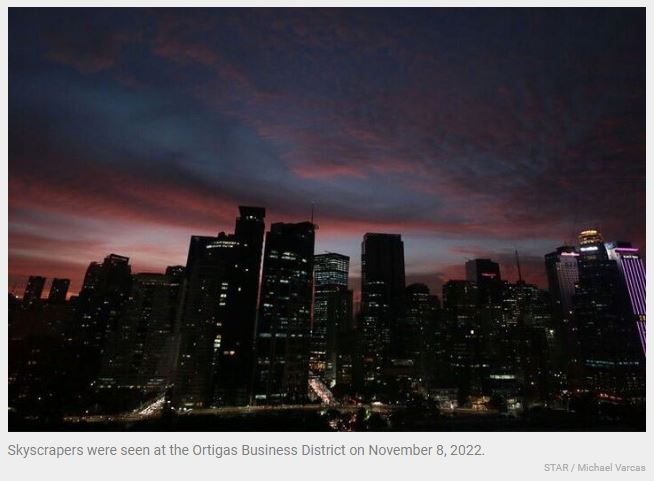Philippines: Economy outperforms, expands by 7.6% in Q3
MANILA, Philippines — The Philippine economy grew at a faster than expected pace in the third quarter despite high inflation, placing it on track to achieving this year’s growth target.
In a press briefing yesterday, National Statistician Dennis Mapa said the economy as measured by the gross domestic product (GDP) grew by 7.6 percent in the third quarter. This is faster than the seven percent growth in the same period last year, and the revised 7.5 percent growth in the second quarter.
National Economic and Development Authority (NEDA) Secretary Arsenio Balisacan said the third quarter GDP performance is also above the 6.3 median analyst forecast.
“This turnout puts us second in growth in the ASEAN (Association of Southeast Asian Nations) region, behind Vietnam’s 13.7 percent and in front of Indonesia’s 5.7 percent,” he said.
On a quarterly basis, the GDP posted a 2.9 percent growth in the third quarter.
The third quarter GDP performance brought growth in the January to September period to 7.7 percent.
“With this, we are on track to achieving the government’s growth target of 6.5 to 7.5 percent for 2022. Given the latest GDP outturn, our economy needs to grow by 3.3 to 6.9 percent in the fourth quarter,” Balisacan said.
He said the economic performance in the third quarter is considered quite high even with the surging consumer prices.
“The high prices may not have completely dampened the desire to go out and spend. Perhaps because on the employment side, they (consumers) see opportunities for income generation,” he said.
If not for those increases in consumer prices, he said the economy would even have higher growth.
The NEDA chief said the third quarter GDP result shows the economy largely benefitted from the further easing of mobility restrictions, including the resumption of face-to-face classes, as these boosted consumption.
On the demand side, he said household consumption and investments were the main drivers of growth.
Household consumption, in particular, grew eight percent in the third quarter this year, higher than the 7.1 percent in the same period a year ago.
“This turnout signifies that Filipino families are close to returning to pre-pandemic life, as more people visit restaurants and hotels and engage in recreational activities within the country,” Balisacan said.
On the production side, all major economic sectors posted positive growth in the third quarter.
Agriculture, forestry and fishing grew 2.2 percent, while industry and services expanded by 5.8 percent, and 9.1 percent, respectively.
Despite being optimistic of meeting the growth target for this year, the government continues to see high inflation due to heightened external risks and recent typhoons as a challenge.
Inflation hit 7.7 percent in October, the highest in nearly 14 years from 6.9 percent in September.
To address high inflation and poverty, Balisacan said the government is providing cash transfers, fuel discounts, and other forms of targeted assistance.
He said the government is also considering the extension of Executive Order 171, which reduces the tariffs on rice, pork, and corn imports to enhance food security given elevated food prices.
In addition, he said the government would continue to present the country as a viable location for investments and create a more enabling regulatory and investment climate.
With high inflation a problem faced by other countries globally as well, he said the country cannot afford not to adjust interest rates if trading partners, particularly the US, are hiking rates.
“If we don’t adjust, we will be seeing an outflow of investment,” he said.
With inflation seen to pick up within the current quarter, Oxford Economics assistant economist Makoto Tsuchiya said the country’s growth momentum is expected to decelerate in the coming quarters.
“Inflation, which we see peaking in Q4 (fourth quarter), will continue to weigh on household spending,” he said.
“Moreover, growing external headwinds, including elevated commodity prices, tighter financial conditions globally, a recession in the advanced economies, and China slowdown, will reduce demand for Philippines’ goods exports,” he said.
For his part, Rizal Commercial Banking Corp. chief economist Michael Ricafort said the economy could still grow at least seven percent in the fourth quarter due to economic reopening and lower base or denominator effects.
He said this would lead to an average GDP growth of at least 7.6 percent for this year, after the 5.7 percent growth posted last year.
“However, for 2023, Philippine GDP growth could average about 6 to 6.5 percent as the lower base or denominator effects gradually dissipate or normalize, mathematically; consistent with the GDP growth average of at least six percent before the pandemic (from 2012-2019),” he said.
Source: https://www.philstar.com/business/2022/11/11/2222919/economy-outperforms-expands-76-q3


 English
English




